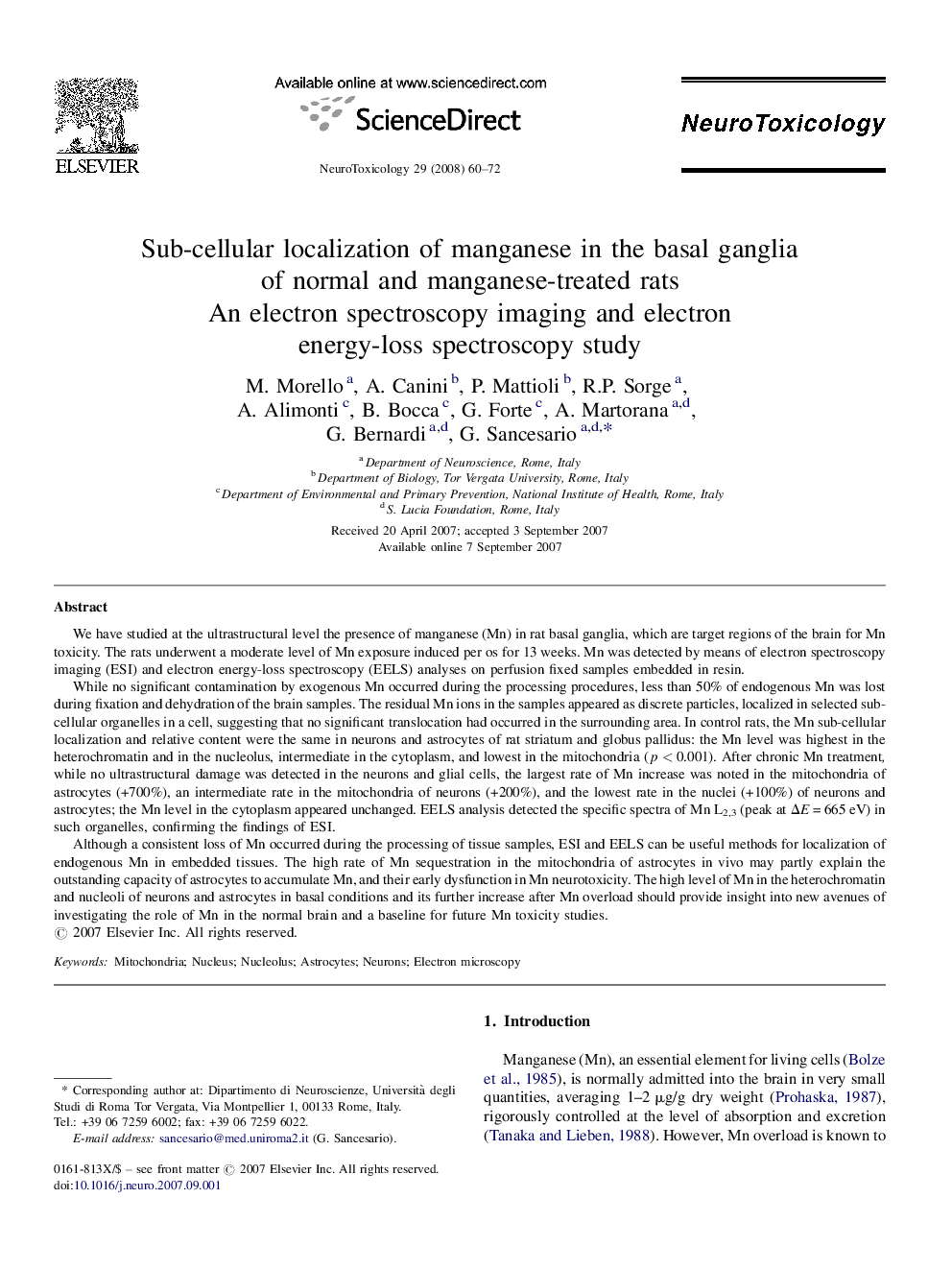| کد مقاله | کد نشریه | سال انتشار | مقاله انگلیسی | نسخه تمام متن |
|---|---|---|---|---|
| 2590445 | 1131744 | 2008 | 13 صفحه PDF | دانلود رایگان |

We have studied at the ultrastructural level the presence of manganese (Mn) in rat basal ganglia, which are target regions of the brain for Mn toxicity. The rats underwent a moderate level of Mn exposure induced per os for 13 weeks. Mn was detected by means of electron spectroscopy imaging (ESI) and electron energy-loss spectroscopy (EELS) analyses on perfusion fixed samples embedded in resin.While no significant contamination by exogenous Mn occurred during the processing procedures, less than 50% of endogenous Mn was lost during fixation and dehydration of the brain samples. The residual Mn ions in the samples appeared as discrete particles, localized in selected sub-cellular organelles in a cell, suggesting that no significant translocation had occurred in the surrounding area. In control rats, the Mn sub-cellular localization and relative content were the same in neurons and astrocytes of rat striatum and globus pallidus: the Mn level was highest in the heterochromatin and in the nucleolus, intermediate in the cytoplasm, and lowest in the mitochondria (p < 0.001). After chronic Mn treatment, while no ultrastructural damage was detected in the neurons and glial cells, the largest rate of Mn increase was noted in the mitochondria of astrocytes (+700%), an intermediate rate in the mitochondria of neurons (+200%), and the lowest rate in the nuclei (+100%) of neurons and astrocytes; the Mn level in the cytoplasm appeared unchanged. EELS analysis detected the specific spectra of Mn L2,3 (peak at ΔE = 665 eV) in such organelles, confirming the findings of ESI.Although a consistent loss of Mn occurred during the processing of tissue samples, ESI and EELS can be useful methods for localization of endogenous Mn in embedded tissues. The high rate of Mn sequestration in the mitochondria of astrocytes in vivo may partly explain the outstanding capacity of astrocytes to accumulate Mn, and their early dysfunction in Mn neurotoxicity. The high level of Mn in the heterochromatin and nucleoli of neurons and astrocytes in basal conditions and its further increase after Mn overload should provide insight into new avenues of investigating the role of Mn in the normal brain and a baseline for future Mn toxicity studies.
Journal: NeuroToxicology - Volume 29, Issue 1, January 2008, Pages 60–72